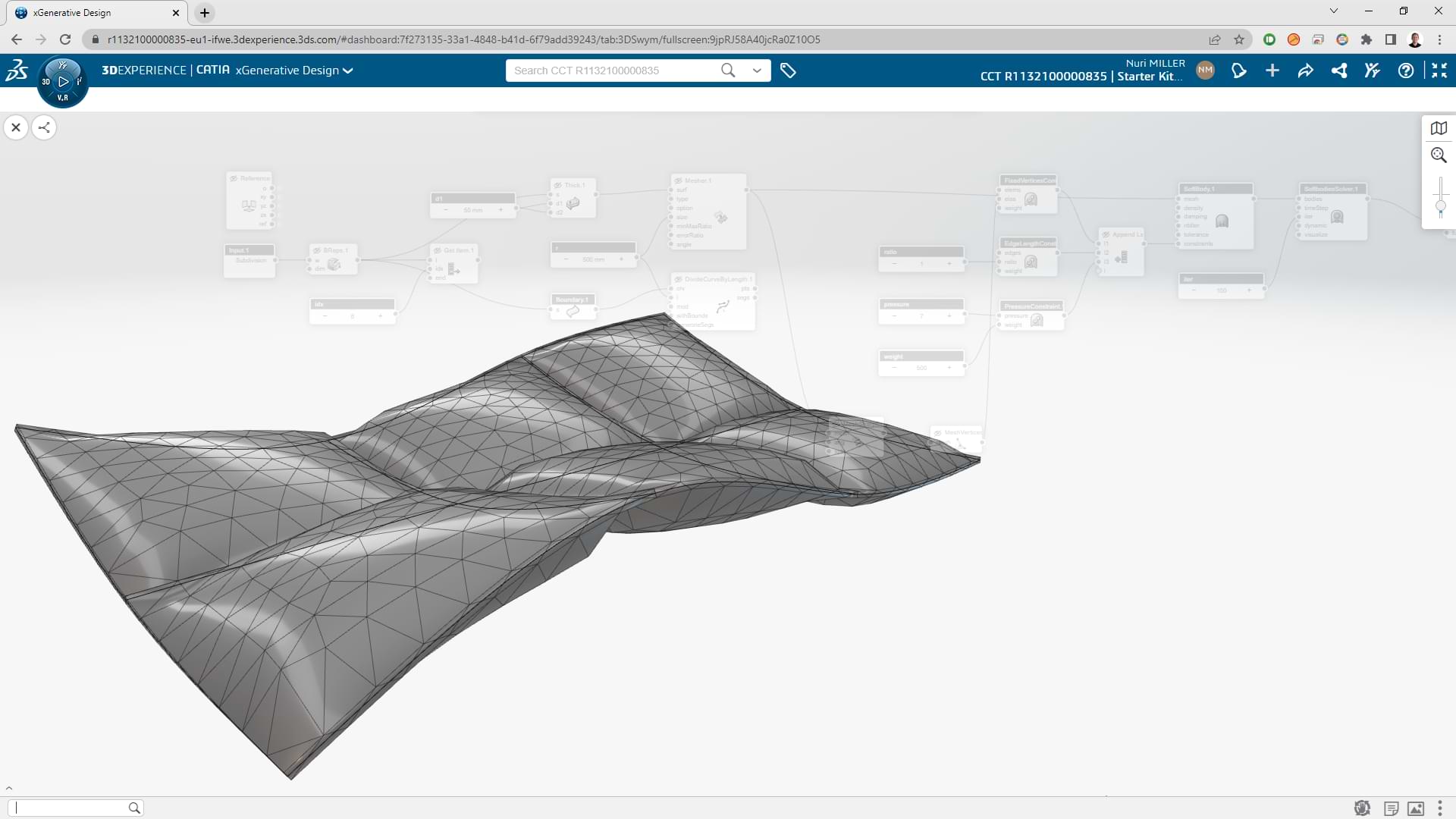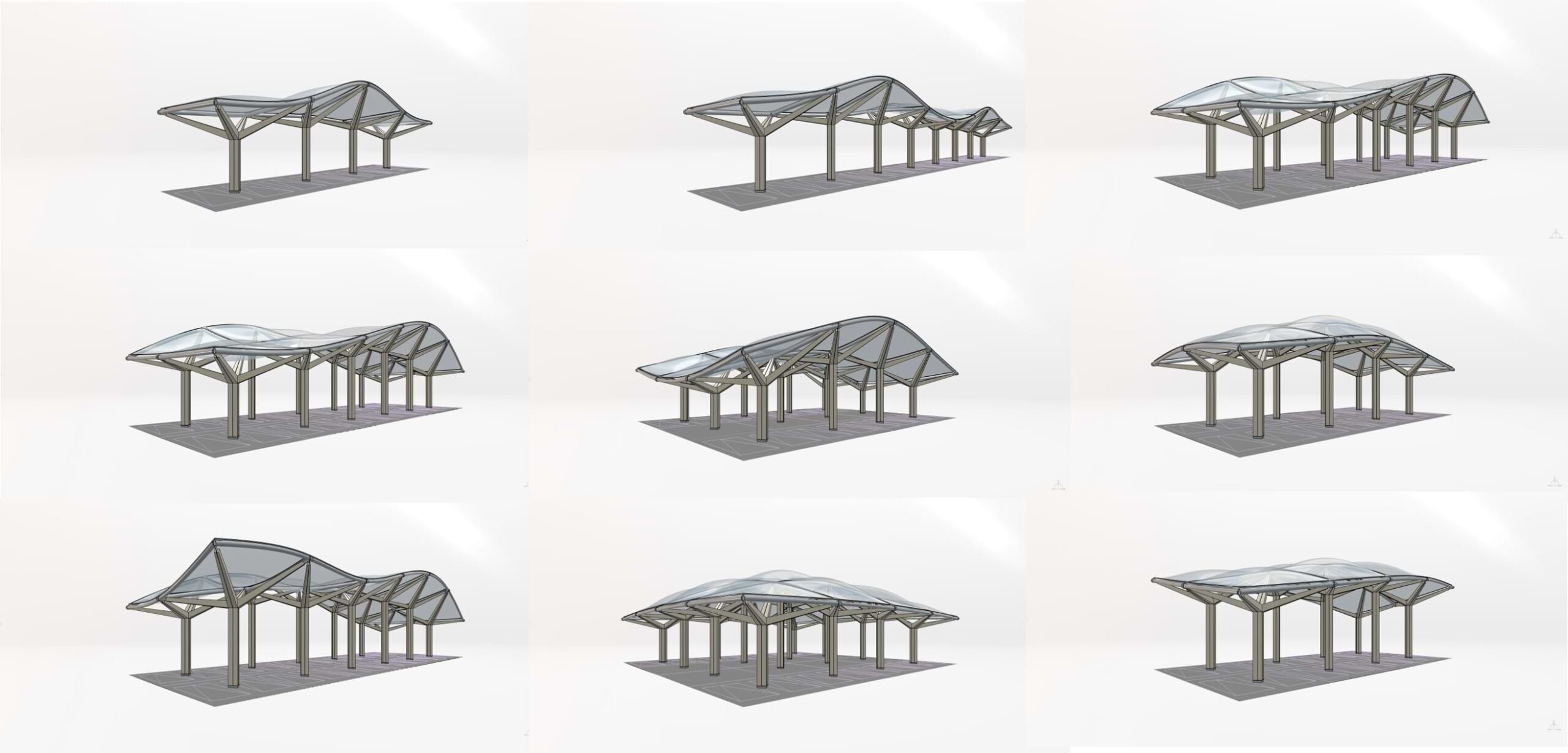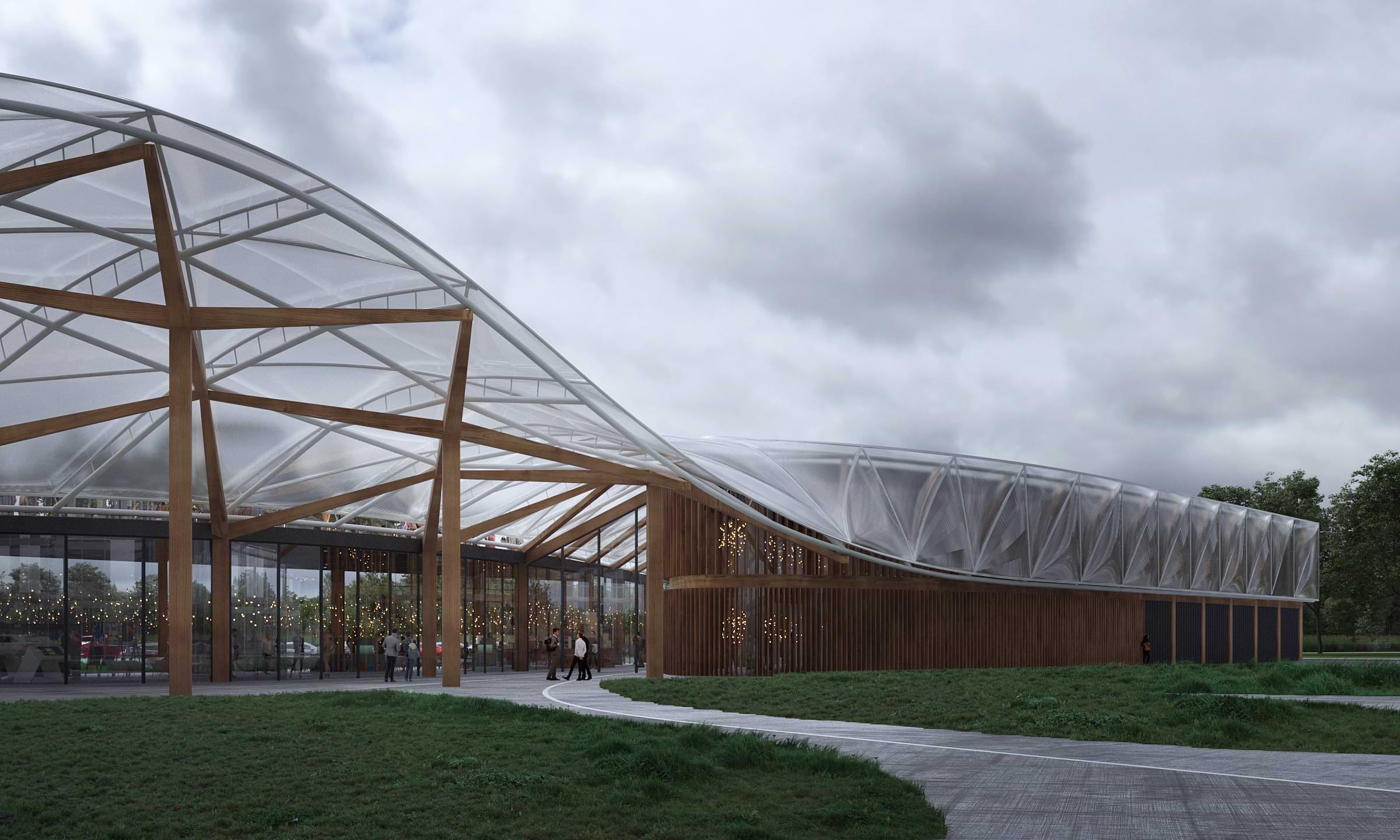Following the success of electric vehicles (EV) and the subsequent need for charging stations, Toronto-based architecture studio Partisans set out on a mission to facilitate electric vehicle (EV) charging in North America. With advanced building delivery expert James Kotronis from Kotronis Consulting and Nuri Miller, AEC Industry Solution technical senior manager at Dassault Systèmes, they co-designed the EV Experience Center, a charging station and event venue that adapts to the needs of any owner and location.
Let’s discover how they created this unique combination of sustainable design and technology while fulfilling the four principles of Partisans’ sustainability philosophy.
REnewable energy

Partisans wanted to find a solution to expand the electric vehicle charging network in order to promote sustainable transportation. The architecture studio’s first goal was to limit the environmental impact of its project. In order to achieve this, Partisans had to consider the lifecycle of the building as a whole as well as its materials and processes, and think ahead about manufacturing, logistics and assembly to make sure that the EV Experience Center could adapt even to remote environments all while reducing its carbon footprint.
The second goal was to create a customizable center that would make EV charging more convenient for drivers. This means that the EV Experience Center could be a simple charging station or a larger area that drivers can visit while their car is charging. “As well as the power infrastructure, however, the EV Experience Center supports the holistic needs beyond the urban center like shops, repair centers, washrooms and overnight stays. It strives to make the entire network more accessible as it expands really quickly over the next decade,” said Ivan Vasyliv, designer at Partisans, in an interview with designboom.
REcyclable materials
Several factors were taken into account to choose the materials for the project: recyclability, self-cleaning properties, lightweightness, strength, componentized materials, and possibilities for local manufacturing.
Two main materials were selected:
- ETFE (ethylene tetrafluoroethylene) foil, a plastic polymer used to replace glazing that is 1% the weight of glass. When layers of ETFE foil are inflated, they create transparent windows that look like cushions.
- Glulam, or glued laminated timber made from local wood, which is renewable and recyclable.

Using these two materials to create the components of the EV Experience Center’s roof reduced the need for steel, which is a heavier and costlier material that offers less flexibility in assembly. Combining ETFE and timber ensured that the building would be highly customizable, durable and easy to install while limiting its environmental impact. In addition, the roof’s ETFE air pillow structure allows plenty of daylight to enter and enables better thermal insulation.
REusable assembly
Partisans and James Kotronis used a productization approach to develop the EV Experience Center. They created virtual construction bricks out of standardized components that could be developed and assembled independently from the project, facilitating manufacturing, transport and assembly.
“Often when people talk about modules, they think about the 1970s when all the apartments looked like bunkers – they all looked the same,” says Pooya Baktash, co-founder of Partisans. “Today’s technology can be used to apply standard parts to design unique buildings.”

Put together, these components created assemblies that could be adapted and reused according to different typological and geometric variations. Using generative design, Partisans was able to quickly generate, model and test hyper-personalized parts and subassemblies, leading to the EV Experience Center’s unique look.
“We don’t know what localization is going to look like and we don’t know where the Partisans team is going to take the design,” says James Kotronis. “But we can digitally develop the interfaces such that they can plug-and-play three or four different steel components. That’s how we build flexibility into the system and support a generative approach.”
REsponsive design

An exact replica of the project would not be relevant or practical for all types of uses or locations, so Partisans worked with real-world conditions to ensure that the EV Experience Center would be responsive to different factors:
- Environment: the building’s geometry adjusts to the limitations of materials, production processes and local climate.
- Function: the building’s geometry adapts to the best functionality according to layouts, types and uses.
Implementing Partisans’ sustainability philosophy

Partisans and James Kotronis chose the 3DEXPERIENCE® platform on the cloud to take full advantage of multidisciplinary intelligence and work with all project stakeholders in one place, from architects, to engineers and contractors. “Success is all about the fluidity of communication and the ability to simulate and evaluate across stakeholder boundaries,” says James Kotronis.
With access to a common model, all disciplines were able to work more efficiently and iterate more quickly on the same data and tools. “The 3DEXPERIENCE platform was an obvious choice for the EV Experience Center. Not only does it merge automotive, AEC, and energy industries, like Dassault Systèmes itself, but the tools on the platform comprise the best system on the market for building systems,” says Pooya Baktash.

Using the 3DEXPERIENCE platform on the cloud, the team optimized the technical and organizational aspects of the project, which allowed them to focus on its creative aspects and implement the four principles of their sustainability philosophy.
“The role of technology is to free creative people to be creative,” says Pooya Baktash. “The creative application of innovative and reusable materials, creative ways to reduce waste from each step in the development process, and creative structures that improve the human experience as well as the local environment are all necessary to achieve a sustainable future.”
If you want to learn more about the EV Experience Center, read our e-book dedicated to the project or watch our webinar replay, where Partisans and James Kotronis discuss the project with Dassault Systèmes expert Nuri Miller.

